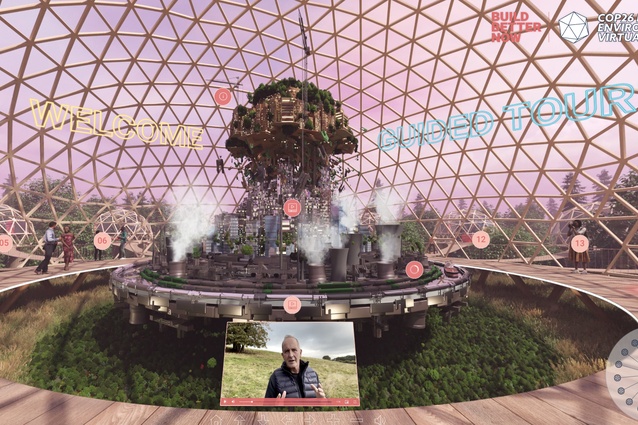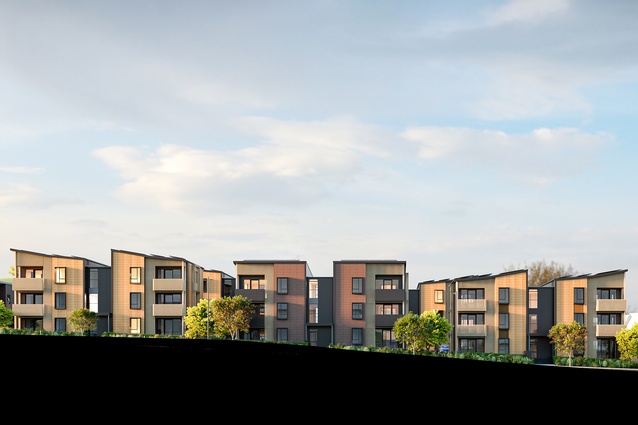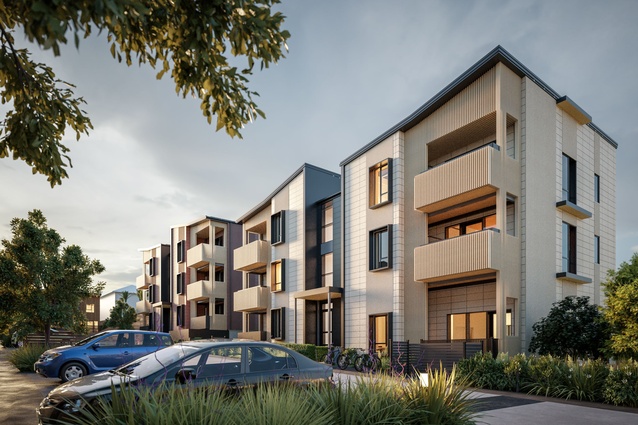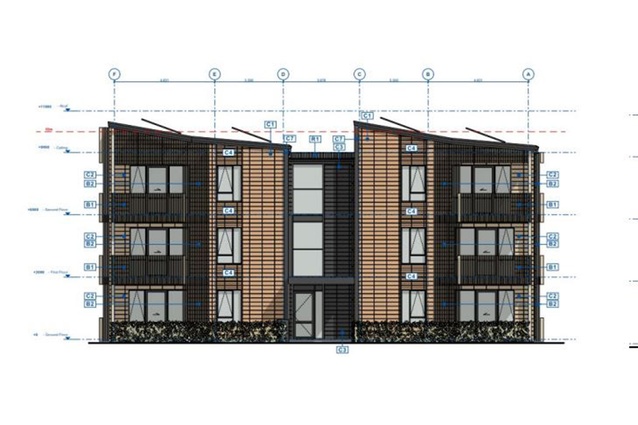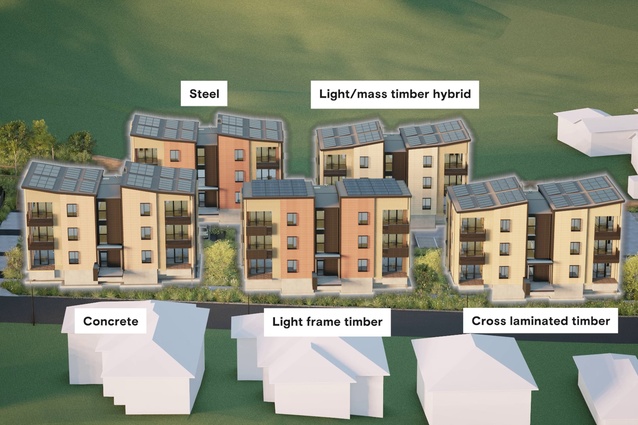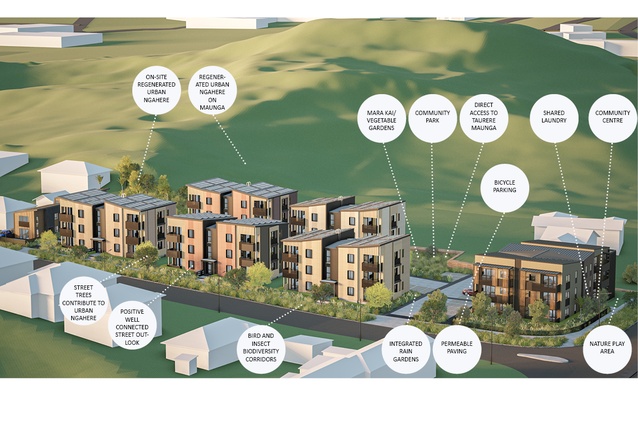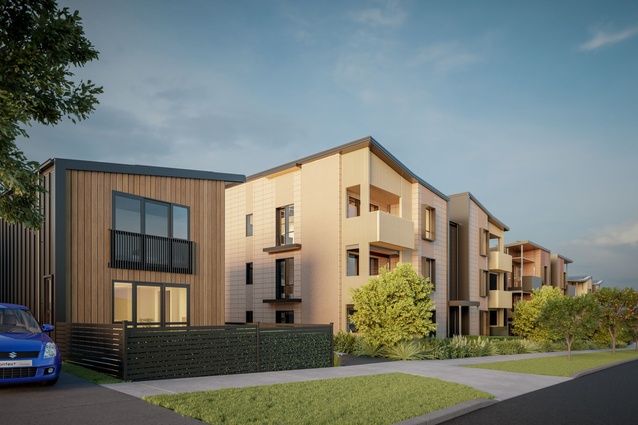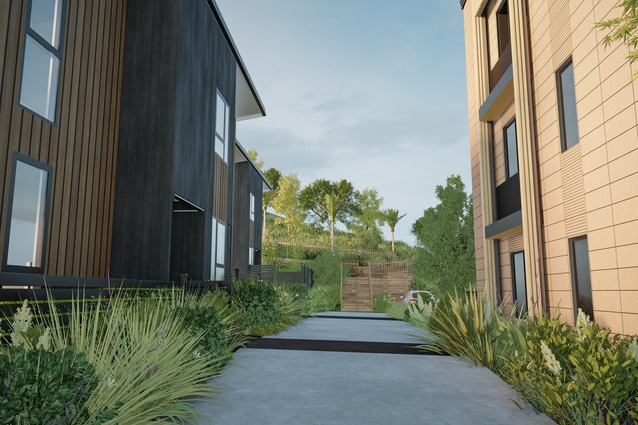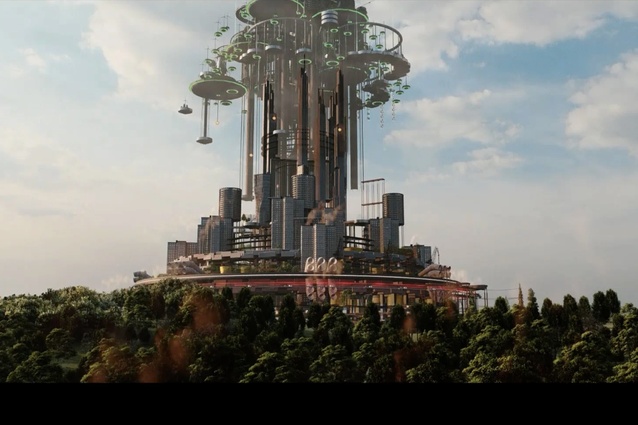Context Architects sustainable housing project on show at UN Climate Change Conference
New Zealand practice Context Architects is currently on the world stage at the 26th UN Climate Change Conference of the Parties (COP26) in Glasgow, albeit in a virtual capacity.
The studio was invited to exhibit its Ngā Kāinga Anamata or ‘Homes of the Future’ project, designed for Kainga Ora – Homes and Communities, in the COP26 Built Environment Virtual Pavilion Build Better Now.
The Context scheme is one of just 17 exemplary sustainable projects selected for the virtual reality (VR) online pavilion. Together, the projects feature around a futuristic Make Architects sustainability-focused 360° installation, the ‘Fountain of Circular Recovery’.
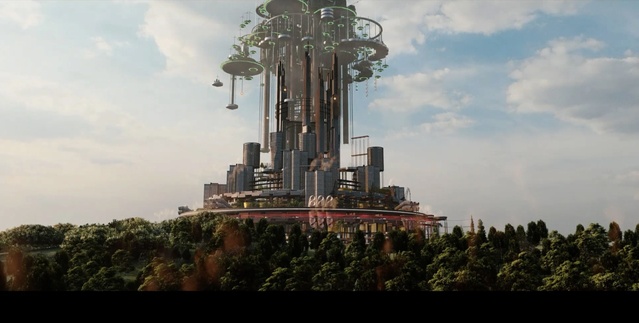
Organisers say a rigorous and transparent selection process was undertaken to find projects for the exhibition, following an international open call in June 2021. A judging panel “comprising industry leaders from across the world, with insight into the complexities of built environment sustainability issues,” selected projects that are making an immediate positive impact on the planet and people’s lives.
These projects, which are both scalable and replicable, explore themes such as natural resource use, climate mitigation and adaptation and nature and biodiversity.
Alongside Context’s Ngā Kāinga Anamata is a cultural centre in Sweden that will be one of the world’s tallest timber buildings; the largest Certified Passivhaus building in the Southern hemisphere in Australia; a 100-hectare innovation district in Italy digitally mapped and powered by 100% renewable energy sources; and the largest new build energy-positive office building in Norway, which supplies surplus renewable energy to neighbouring buildings as well as powering electric buses.
Buildings constructed using natural local materials range from a UK university building utilising thatch and reed; a school in Indonesia built with bamboo and the first 3D-printed sustainable homes made entirely from raw clay.
Projects protecting and enhancing nature include a government-led eco-tourism initiative to restore a national park in Rwanda and a high-tech rewilding project, restoring native forest and peatlands and reintroducing locally extinct species to 100 acres of land in the Scottish Highlands, which will form a template for similar nature regeneration globally.
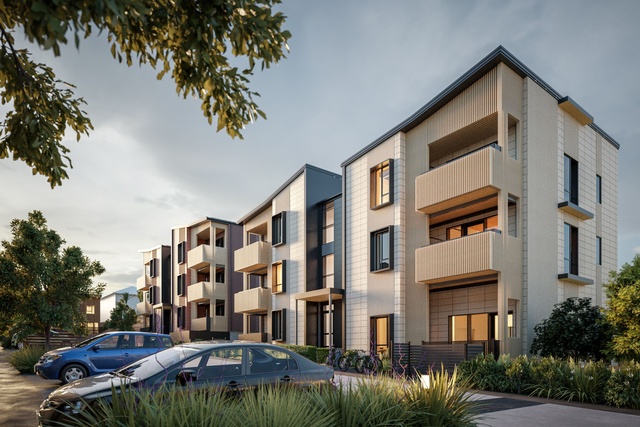
As well as government-funded research into retrofitting Scotland’s iconic but hard-to-heat tenement homes, the exhibition features a favela in Brazil and affordable sustainable housing solutions in the UK and Pakistan. Also included are an adaptable cross laminated timber bridge concept designed for a circular economy, as well as an initiative to develop a sustainable mass timber building market in East Africa.
“When Kāinga Ora asked us to be involved in a research and development pilot programme to change the future of sustainable residential development, we couldn’t wait to be part of the team,” says Context Architects associate Aaron Galloway. “The client’s ambition was to understand what high-performance, low-carbon social housing would look like using New Zealand-sourced materials and building systems. The brief was to design five almost identical apartment buildings, but each from a different structural system: steel, concrete, light frame timber, mass/cross-laminated timber and a hybrid combination of light and mass timber. At this stage, the project was given the working title ‘5 Systems’.”
Sustainability and lifecycle carbon mitigation was at the forefront from the programme’s inception, along with aspirations for each building to achieve Passive House certification and be net-zero energy.
“A turning point for the project was a one-day workshop six months into the initiative with the entire team, including BRANZ, Aurecon, Robert Bird Group and Ortus International, to review the work already undertaken,” explains Galloway. “Learnings, data, and best practice were shared, and a fifth construction system was proposed using a light/mass timber hybrid. Following the workshop, as lead designers, we once again returned to the drawing board.”
There followed an extended developed design process, which included a three-month consultation period with construction industry experts to discover the best innovations, practices and materials being used in New Zealand. “This allowed us to talk about the different approaches to building low-cost sustainable houses, from pre-fabrication to traditional construction methods,” says Galloway.

Drawings were refined and reworked in the detailed design phase based on the key take-outs from these sessions, while BRANZ and the other partners in the project team ran the numbers to check the data was in line with the project’s objectives.
5 Systems continued to evolve and has since been gifted the name Ngā Kāinga Anamata, te reo Māori for “Homes of the Future”. The data and learnings from this programme will influence and catalyse system transformation in the construction industry for years to come.
Galloway admits that the team is at the beginning of its construction industry carbon-neutral journey: “This is just the start. The industry needs to continue looking at different approaches and methods to achieve desired outcomes but this R&D project has taught us that we can achieve higher-performing homes with carbon reduction. We now need to share what we have learnt so that industry can build healthier, drier, and warmer homes that are good for the planet, as well as affordable and relevant for everyone.”

